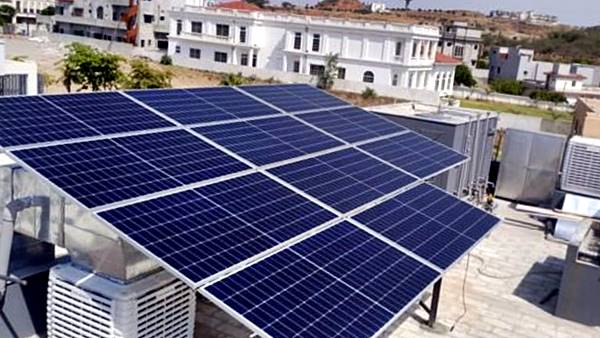KARACHI – Solar panel prices in Pakistan plunged again to drop to new low for different reasons including abundance supply.
Reports said per watt prices of solar panel plates have decreased to Rs28 amid anticipation of further decline in local market of Karachi.
Earlier, Federal Minister for Energy Awais Leghari shared that 8,000 megawatts of solar panels were imported into Pakistan in just one year.
Due to huge potential in Pakistani market, some local and international companies are planning to establish solar inverter manufacturing plant in the South Asian country. If implemented, it would save precious foreign exchange of Pakistan.
These reductions in prices vary from market to market, as prices in Lahore and other cities are different as compared to other cities.
For the unversed, the prices are for on-grid systems, which connect to the national grid. Those opting for hybrid systems with battery storage will face additional costs for the batteries. The fresh cut in solar panel costs is said to boost solar acceptance in the country as prices of utility bills are touching the roof despite drop.
Easy Guide to Buy Solar System in Pakistan
| Steps | Details |
| Assess your Energy Needs | Review monthly electricity consumption (kWh). Calculate peak load. Consider future expansion. |
| Decide on Type of System | On-Grid: Connected to the national grid; no backup. Off-Grid: Independent; requires batteries. Hybrid: Combines on-grid and off-grid; backup power. |
| System Size | Small (1-3 kW): Basic home needs. Medium (5-10 kW): Larger homes/small businesses. Large (10-20 kW and above): Commercial/industrial use. |
| Components | Solar Panels: Monocrystalline (efficient, expensive) or Polycrystalline (less efficient, cheaper). Inverter: Converts DC to AC power. Batteries: Lead-Acid (lower cost, shorter lifespan) or Lithium-Ion (more expensive, longer lifespan). Charge Controllers: MPPT (efficient) or PWM. Mounting Structures: Durable and corrosion-resistant. |
| Budget Check | Installation Costs: Included in quotes. Operation & Maintenance: Minimal, periodic cleaning. |
| Pick a reliable provider | Choose reputable brands and certified installers. Check for warranties and after-sales service. |
| Financial Incentives | Net Metering: Sell excess electricity to the grid. Government Incentives: Check for subsidies or tax rebates. |
| Installation Process | – Site Survey: Evaluate installation space. – Quotation: Get multiple quotes. – Installation: Typically 1-3 days. – Net Metering Application: Required for on-grid/hybrid systems. |
| Maintenance & Monitoring | – Cleaning Panels: Every 3-6 months. – Inverter & Battery Checks: Regular monitoring. – Monitoring Apps: Track performance in real-time. |










